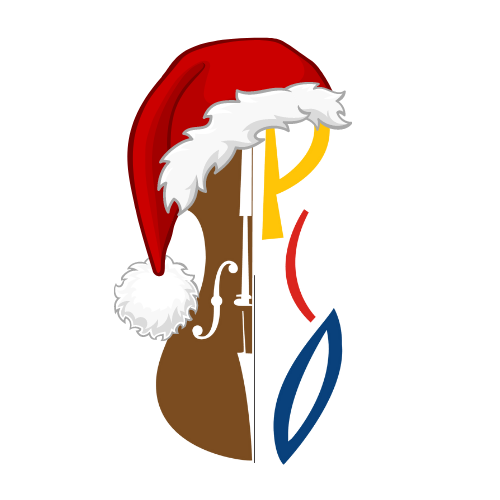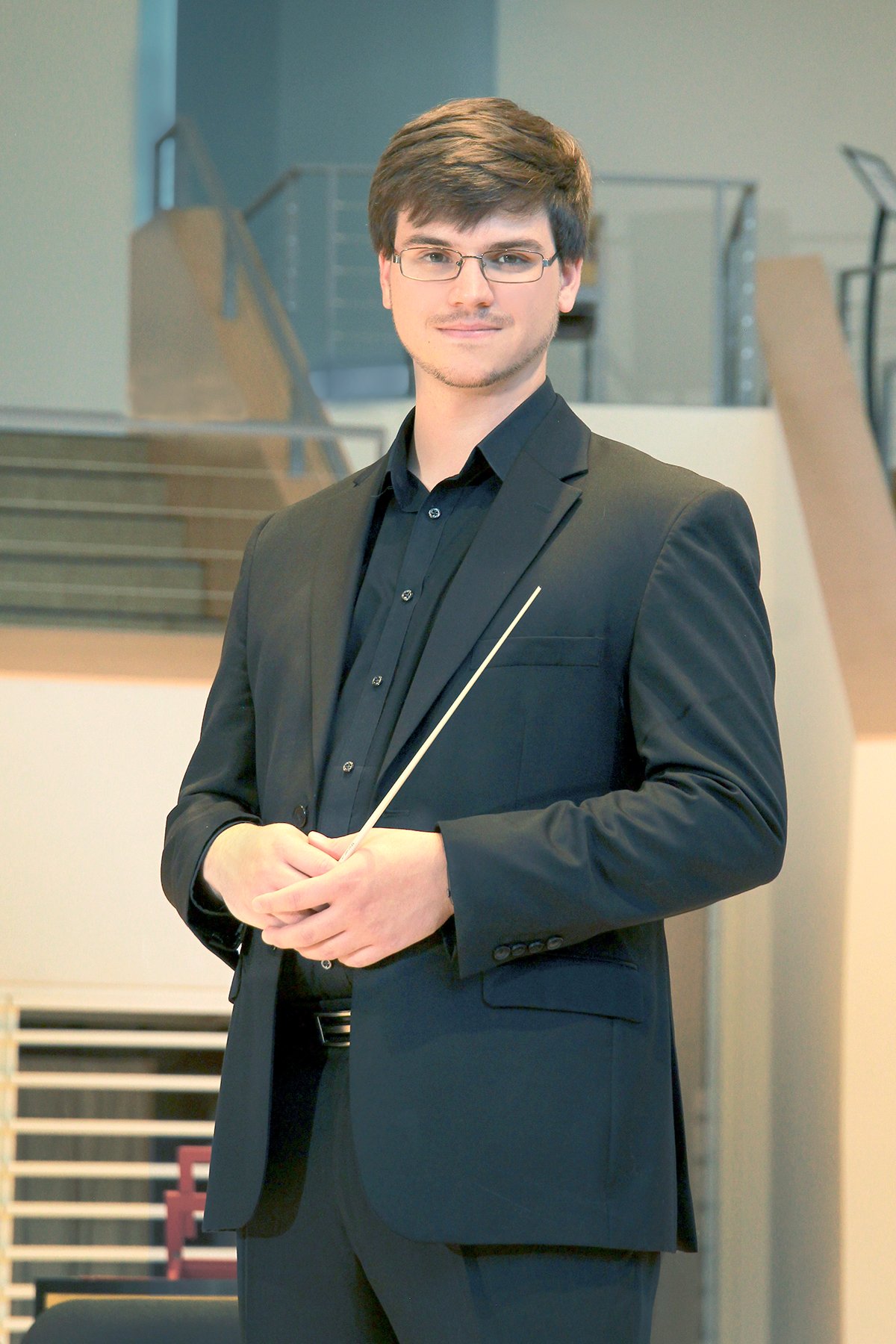Holiday Concert: A Holiday Celebration
Sunday, December 11, 2022
3:00 pm @ Penn State Recital Hall
Timothy Farrand, Guest Conductor
Enjoy a Pennsylvania Chamber Orchestra holiday tradition on Sunday, December 11 at 3 pm at the Penn State Recital Hall. Join the PCO and guest conductor Timothy Farrand as they perform highlights from the Nutcracker, tell the story ‘Twas the Night Before Christmas, and present other holiday favorites sure to delight the entire family.
Christmas Suite (Première suite de noëls) - François Joseph Gossec
Fantasia on Greensleeves - Ralph Vaughan Williams (arr. Greaves)
O Magnum Mysterium - Morten Lauridsen (arr. Dackow)
Toy Symphony - Edmund Angerer
It’s the Most Wonderful Time of the Year - arr. Bob Cerulli
Selections from The Nutcracker - Piotr Ilyich Tchaikovsky (arr. Farrington)
‘Twas the Night Before Christmas - arr. Douglas Meyer
Concert Sponsor: Whalley Charitable Trust
Program Notes
Today’s concert begins with music by François-Joseph Gossec (1734-1829) who was born into a farming family in the Southern Netherlands village of Vergnies (now in Belgium). After singing as a choirboy at Antwerp Cathedral he moved to Paris in 1751. There his association with composer Jean-Philippe Rameau led to employment in the orchestra of Alexandre Jean Joseph Le Riche de La Poupelinière. An innovator in the development of French orchestral music, Gossec published 24 symphonies during this time.
In the French speaking lands the tradition of composing and enjoying music for the Christmas season was quite strong and Gossec contributed two orchestra suites to the repertory. The Première suite de noëls (1766) was undoubtedly intended for performance in the cathedral as part of Christmas celebrations, perhaps even as part of a nativity play.
The music begins with two dances often performed together, a “pavane” based on a solemn processional dance from early 16-th century Spain followed by a “siciliana,” an Italian dance traditionally in triplet rhythms. The following movement Le Chant may be a typical song of the season and the final movement “Accurrite gentes” (Tell all the Nations) announces the news of the Christmas story, featuring a shepherd’s dance as a middle section.
The Fantasia on “Greensleeves” by Ralph Vaughan Williams (1872-1958) was originally part of the 1929 opera Sir John in Love, his version of Shakespeare’s The Merry Wives of Windsor. Much of the libretto for this opera was drawn directly from Shakespeare and other Elizabethan poets. To create a proper mood, many of the musical themes are taken directly from popular 17th-century ballad tunes and keyboard music.
In “The Merry Wives of Windsor”, William Shakespeare mentions this folk song twice. In Act Two, we can see- “I would have sworn his disposition (Falstaff) would have gone to the truth of his words, but they do no more adhere and keep place together than the Hundredth Psalm to the tune of 'Green Sleeves’” (suggesting Falstaff may not be telling the truth). Also, in Act Five, we find- "Let the sky rain potatoes; let it thunder to the tune of 'Green Sleeves.’”
In 1934, Ralph Greaves arranged this passage as a separate orchestral work. In this setting, Greensleeves (which of course became the tune of the 19th-century carol “What Child is This”) is stated at the beginning and end, surrounding a more sprightly version of the tune “Lovely Joan.”
Morton Lauridsen (b. 1943) is an American composer of principally choral music. He is best known for his six vocal cycles and his setting of O Magnum Mysterium (O Great Mystery). Lauridsen is a 3-time Grammy nominee and the recipient of numerous awards, including the National Medal of Arts, presented to him by President George W. Bush in 2007. He was composer in residence for the Los Angeles Masters Chorale from 1994-2001 (which premiered his O Magnum Mysterium).
O Magnum Mysterium has received thousands of performances and at least 100 professional recordings since its 1994 premiere. Of his original version, Lauridsen wrote:
For centuries, composers have been inspired by the beautiful O Magnum Mysterium text with its depiction of the birth of the new-born King amongst the lowly animals and shepherds. This affirmation of God’s grace to the meek and the adoration of the Blessed Virgin are celebrated in my setting through a quiet song of profound inner joy.
When the Toy Symphony was first published in 1820, it was credited to “Haydn” and Joseph Haydn’s popular biographers dutifully cooked up a story about the composer creating this to delight the children at a Christmas party. Other possible contenders include Leopold Mozart, Joseph Haydn’s brother Michael, and an Austrian monk, Edmund Angerer. The work was published long after all of the possible candidates had died, and the true author may never be known. Whoever wrote it, this is a truly charming little 18th-century novelty piece—a tiny “symphony” in three movements, lasting all of seven minutes. The soloists play a collection of all of the noisemakers that would have been heard in an Austrian home on Christmas morning: toy trumpets and drums, rattles, and a host of birdcalls, including an irrepressible cuckoo.
The Christmas classic, “It's the Most Wonderful Time of the Year” is a bright, fanciful arrangement by Bob Cerulli of one of the most popular tunes of the season. Written by Edward Pola and George Wyle, it was originally recorded by Andy Williams and later by Garth Brooks ending with the verse:
“It's the most wonderful time of the year
There'll be much mistletoeing
And hearts will be glowing when loved ones are near
It's the most wonderful time of the year.”
Edward Pola was an actor, radio and television producer born in New York City who worked for a time in England. In the 1920s, Pola began to write songs and in 1930 he scored “Harmony Heaven” one of the first sound films in England. Eventually he moved to the United States where he produced the radio comedy The Alan Young Show and continued as a producer, moving to television in the 1950s. Among his songs were “Quicksilver” (co-written with George Wyle and Irving Taylor) and "Till The Lights Of London Shine Again" (co-written with Tommie Connor).
The Nutcracker, the third and last of the ballet scores by Tchaikovsky, was preceded by the equally grand scores for Swan Lake and The Sleeping Beauty. These danced stage works form a triumvirate of what can easily be called the greatest ballets of the 19th century. The Overture miniature and March are excerpts from Act I of The Nutcracker. In Act II we find ourselves in the land of sweets, Confiturembourg, whose ruler is the Sugar Plum Fairy.
The dance divertissement begins with the Spanish Dance (chocolate), a lively bolero initiated by trumpet and sparked by the rhythmic snap of castanets. Next is the Arabian Dance (coffee), a languorous melody that sways first to a rocking accompaniment in low strings, then to a persistent drone bass. The composer’s chinoiserie for the Chinese Dance (tea) involves flutes and piccolo performing a quaint, ornate melody in the high register. In the Trepak (Russian Dance), wildly energetic music depicts whirling, leaping, and kicking Russian figures. The set of dances concludes with the brilliant Waltz of the Flowers.
“A Visit from St. Nicholas” more commonly known as “The Night Before Christmas” and “Twas the Night Before Christmas” was first published anonymously in 1823. It was later attributed to Clement Clarke Moore, who claimed authorship in 1837.
The poem has been called "arguably the best-known verses ever written by an American” and is largely responsible for some of the conceptions of Santa Claus from the mid-nineteenth century to today. It has also had a massive impact on the history of Christmas gift-giving.
Meyer: For some time I’ve toyed with pairing the songs and carols of Christmas with the episodes of “Twas the Night before Christmas” as I would pair a tasty cheese with a holiday wine, or in this case a Stollen or Pfeffernusse with Glühwein. To my mind the image of the shepherds as they lay in the fields with their sheep so many years ago pairs easily with the children all snug in their beds; the swirling appearance of St. Nicholas and his octet of reindeer, with the jingling of sleigh bells in a wintery, cross country sleigh ride; and the bundle of toys he had slung on his back, with Toyland, Toyland, the little girl and boy land.
And, what could provide a better finale to our merry visit with St. Nick than a grand portion of figgy pudding and a cup of good cheer? Merry Christmas and a Happy New Year!
Program notes by Conductor Laureate, Douglas Meyer.




